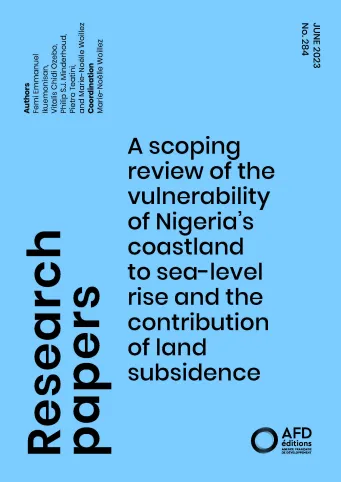Share the page
A scoping review of the vulnerability of Nigeria's coastland to sea-level rise and the contribution of land subsidence
Published on

Nigeria’s low-lying coastal region, with its various economic activities, is vulnerable to global sea-level rise triggered by climate change. In some areas, this threat can be amplified by land subsidence, which can severely hamper coastal resilience. Several studies have investigated the vulnerability of Nigeria to global sea-level rise, but only few studies have investigated the role of increasing subsidence rates in some low-lying coastal cities, and none has provided a comprehensive review of the combined effects of these two phenomena. We propose here a synthesis of available literature on land subsidence and relative sea-level rise along the Nigerian coasts and identify current knowledge gaps. In addition, this study provides an in-depth analysis of land subsidence in the Port Harcourt area, using recently acquired Sentinel-1 satellite data. The findings indicate that land subsidence occurs in four coastal area: Lagos, Port Harcourt, Uyo, and Warri. However, the absence of active GNSS stations to calibrate and validate InSAR measurements poses the results quite uncertain. Another significant knowledge gap is the lack of records of groundwater withdrawals and piezometric evolution in recent decades. This information is necessary for reliable quantification of the link between groundwater extractions and land subsidence. Integrating measurements of recent sea-level changes with vertical land motion and piezometric data would be necessary to improve knowledge on land subsidence in Nigeria and provide relative sea-level rise projections. It is necessary to separate processes occurring on a global scale, such as sea-level rise, which are not directly under the control of the Nigerian authorities, from processes occurring locally, such as anthropogenic land subsidence, which could be mitigated. This study is a first step towards the development of effective mitigation and adaptation strategies against relative sea-level rise in Nigeria.
Useful Information
-
Authors
-
Femi Emmanuel IKUEMONISAN, Vitalis Chidi OZEBO, Philip S.J. MINDERHOUD, Pietro TEATINI, Marie-Noëlle WOILLEZ
-
Coordinators
-
Edition
-
284
-
Number of pages
-
38
-
ISSN
-
2492 - 2846
-
Collection
-
Research Papers
